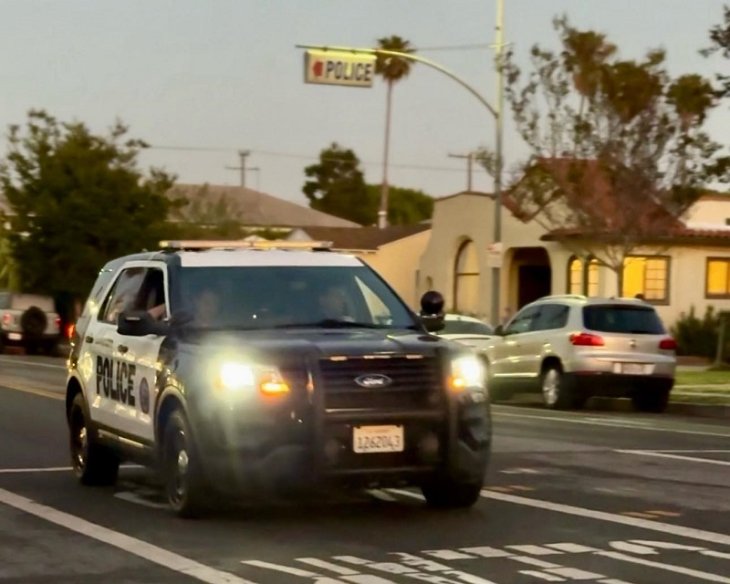
Phil Stern, an original U.S. Army Ranger and famed war photographer who went on to capture unique and arresting — if not downright eccentric — images of Hollywood celebrities, will celebrate his 95th birthday tomorrow with the installation of 95 of his photos at a West Los Angeles veterans home.
The photos donated by Stern will adorn the walls of the Veterans Home of California, where he lives.
The trailer for “Phil Stern: Eyewitness,” a documentary still in production, will be screened at the unveiling event, as will the 50-minute Italian documentary “Phil Stern: Sicily 1943, The War and The Soul,” which was produced in 2013 for the 70th anniversary of the Sicily Invasion.
Some of Stern’s personal memorabilia will be displayed, including magazine covers, his Purple Heart and his correspondence with Frank Sinatra, who hired Stern as the official photographer of President John Kennedy’s Inaugural Ball. It was Sinatra who made Stern the official photographer of “Camelot.”
Born in Philadelphia, Stern became a teenage photographer for the Brooklyn Eagle. As a young man, he joined the Darby’s Rangers — the original U.S. Army Ranger brigade created following the nation’s entry into World War II.
Of the original 1,500 members of Darby’s Rangers, only 199 survived the war. Stern, who is one of only 10 who are still alive, played himself in a 1955 Warner Bros. film about the brigade, starring James Garner.
While in the Army, Stern worked for Stars and Stripes. After the war, he became one of Life magazine’s top photographers in Hollywood.
Along the way, Stern also photographed a multitude of great jazz musicians. Impresario Norman Granz insisted that Stern take all the cover photos for his Pablo Records label, including shots of Billie Holiday, Louis Armstrong, Art Tatum and Ella Fitzgerald.
For years, Stern sold prints of his photographs from his modest Hollywood home. One of his customers was Madonna, who showed up on his doorstep to buy his famed image of Marilyn Monroe, which showed her not as a glamorous star, but as a vulnerable and sad young woman.
When told that many admirers of his work think he is a great artist, he replied, “Matisse I ain’t.” Stern said he doesn’t believe any photographers, including himself, can ever really be called an artist “like, say, Rembrandt.”
“In my mind, a photographer is like a carpenter. He can make a beautiful cabinet and you can exclaim, `It’s a work of art,’ but it’s never going to be a Rembrandt,” Stern said.
But when Life magazine arranged an exhibit of its best photographs, the lead photo was not a Margaret Bourke-White or an Alfred Eisenstaedt. It was Stern’s portrait of a tired couple from Oklahoma, trying to cross the border into California in 1939 in their battered Ford truck — a photo that became synonymous with the Great Depression.
Stern’s political and spiritual essence was molded by the New Deal and the Depression and, as befits his time, he was a political lefty.
He had a longtime feisty relationship with John Wayne, with the dynamics based on their political differences. Wayne called Stern a Bolshevik, and Stern called him a Neanderthal.
Stern, always a prankster, was in the former Soviet Union when he dug out a stamp with the biggest picture of Vladimir Lenin he could find, stuck it on a postcard and sent it to his Hollywood pal.
It was his role in “Darby’s Rangers” that brought Stern to Los Angeles, but the man who gained a reputation for making idols out of the ordinary soldier on the battlefield also proved adept at catching the human side of many Hollywood greats.
Stern became famous for his photos of the likes of James Dean, Spencer Tracy, Marlon Brando, Audrey Hepburn, Sophia Loren, Orson Welles, Humphrey Bogart and Sammy Davis Jr., as well as Wayne and Monroe.
Even into his 70s, Phil could be seen scrambling around Hollywood on his moped to shoot his assignments. As he got older, his activities turned more and more toward archiving his huge collection. He eventually needed help getting around. But he has remained as sharp as a tack, if not a bit more cantankerous than he used to be.
In 1993, he released the book “Phil Stern’s Hollywood,” featuring 90 black-and-white photographs showcasing his work from the 1940s through the 1970s. In 2003, he released “Phil Stern: A Life’s Work.”





















